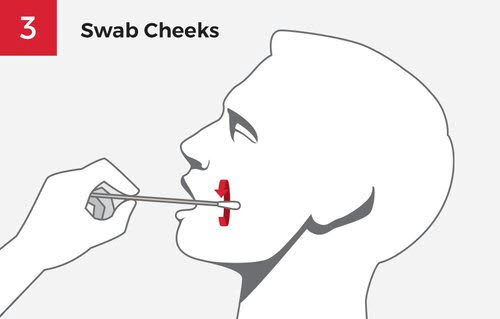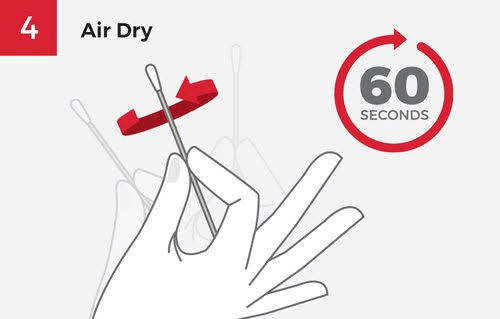Your
Resources
DNA testing is an increasingly common way of determining relationships between individuals, such as whether a man is the father of a child. A list of frequently asked questions tackles some of those most common questions and queries you might have. If you do not see the answer to your question, please call now or complete our contact form, available on the Contact Us page. Someone from our customer support team, will be happy to assist you in complete confidence.

DNA Paternity
Testing FAQS
DNA paternity testing (called DNA or parentage testing) uses DNA, the biological basis of inheritance, to prove or disprove the biological relationship between a child and an alleged father. It is based on the fact that we inherit half of our DNA from our father and half from our mother.
In a DNA paternity test, DNA samples are taken from the alleged father, child and or mother (mothers are not required & there is no additional fee to add mother) the samples are sent to our lab. The lab purifies the DNA and prepare if for testing to produce a genetic profile for each tested individual. The child’s profile is compared with the profiles of the alleged father and mother to confirm that he/she has inherited DNA from the alleged father. The lab then performs statistical analysis to calculate the probability of paternity.
DNA paternity testing is 100% accurate when done properly. We are in partnership with laboratories that use a Dual Process trademark which helps ensure a strict chain of custody and error-free results by proper handling, testing, and analysis of samples.
In the case of an inclusion result (the alleged father is found to be the biological father), the probability of paternity could be as high as 99.999% and above. A laboratory would have to test every other man in the world in order to prove a probability of paternity of 100%. Instead, the paternity test uses a population database to calculate the probability of paternity.
An exclusion result is always 0% because if the genetic profiles for the child and alleged father do not match, there is statistically no chance for the two to be biological related.
Testing through Nationwide DNA Services via our accredited laboratories follows a strict chain of custody, which allows our results to be defensible in courts and other government agencies. Many of our clients use our results for the above mentioned reasons.
No. Mothers are not required, however if the mother is available & willing, adding her DNA does not hurt.
Mothers who participate are guaranteed a copy of the test results. If you do not test, you do not receive a copy of the report. Our strict confidentiality policy allows us to release to tested parties, representative such as an attorney, or to the tested child’s legal guardian
No. Because DNA is set at conception and generally does not change, paternity tests can be performed even on a sample from an unborn child (Prenatal Testing). Samples can also be collected soon after birth with a simple buccal swab from the newborn
For a chain of custody test (court admissible) all participants must bring a valid government-issued ID such as a driver’s license, state ID, or passport. For minors a birth certificate or social security card is sufficient, but NOT REQUIRED since the child’s legal guardian or alleged father must sign the consent form allowing the minor or newborn baby to be tested.
No. Private parties can take a DNA test without a doctor’s request or court order. However, the New York State Department of Health (NYSDOH) only allows a clinical laboratory to examine specimens at the request of a licensed physician or other persons authorized by law to use the result in their practice or in the performance of their official duties. For more information regarding DNA testing in New York, contact our DNA specialist team.
Yes. If the mother’s participation is not possible, we can perform a motherless DNA test without any additional charges. A motherless test requires more extensive analysis, but produces the same accurate results.
Chain of custody testing requires a custodian to sign the minors testing consent form. However, a minor mother can sign for her child. If a tested minor is emancipated, we require a copy of documented proof.
Description goes here are several options for deceased or missing alleged fathers:
Option #1
DNA testing of samples taken from the deceased, such as a spot card, stored blood, or a tissue sample, usually from a coroners or medical examiner’s office. In addition, samples (cheek scraping, hair, nails and ear swab) can be exacted from the body at the funeral home, prior to burial. These type of testing is legal and acceptable by courts & social security.
Option #2
If there are no biological samples from the fathers, then a grandparentage test is the next option to be considered, however most government offices & courts treat these results as indirect evidence of paternity, other words non chain of custody-non legal.
Option #3
If the grandparents are not both available to be tested, other family relationships may be tested to determine paternity through genetic reconstructions, siblingship test, and others.
At-Home
DNA Collection Instructions
This visual guide applies for any Home DNA test kit which requires a saliva sample via buccal swab.
At-Home Collections
5 Quick Steps
Start Clean

To maintain the integrity of the DNA sample, do not eat, drink, or smoke for 30 minutes prior to swabbing. Doing so does not change the DNA or affect the result of the test, but foreign substances on a swab may negatively affect the ability to effectively extract the DNA.
Remove Swab

Tearing the end of its packaging carefully, remove a cheek swab by the stick, taking care to not let the fabric end touch the table or other surface.
Brush Up and Down while Rolling the Swab

Using a rolling motion, swab the inside of the cheeks on both sides for a full 30 seconds, taking care to avoid the gum areas as much as possible. Move the swab up and down while still rotating to maximize the collection of cheek cells that contain DNA. Remember, you are not collecting saliva—you are collecting cheek cells. Do not spit on the swabs. Repeat Step 2 with the remaining swabs, alternating cheeks with each swab; be sure to use all 4.
Allow to Air Dry for 60 Seconds

If the swab seems “too wet,” wave it back and forth in the air for 60 seconds. The swab does not need to be completely dry before placing in the paper sample envelope.
Place Swab in Paper Envelope

Taking care not to touch the fabric end, place the swab directly in the paper sample envelope. Swabs should never be put back in the original plastic packaging or stored in plastic baggies since this can degrade the sample during shipping.
At-Home DNA Collection
Instructions FAQS
If the sample envelope seems damp, just place it on a clean counter and let it air-dry before placing the envelope into the mailer. This will not compromise the integrity of the DNA in any way.
The buccal swab kit we send you contains complete instructions for collecting each test participant’s DNA safely and effectively. We provide four (4) cheek swabs for each person, which you use to firmly swab the inside cheek. This collects more than enough DNA to run the test.
Handle swabs with care! If different participants’ swabs touch before being placed in their respective paper envelopes, they might cross contaminate. Please contact us and we’ll be happy to ship you out new DNA-collection supplies at no additional cost.
Please do not put swabs with samples back into the original plastic packaging or into household baggies for storage and/or shipping purposes. Paper sample envelopes included in the kit are ideal receptacles for organic matter like DNA because paper “breathes.” When DNA is confined in plastic it can become a breeding ground for mold and the sample quickly becomes degraded. If the lab receives degraded samples, they won’t be able to be tested and the lab will request new samples; this will delay results.
If swabs seem too “wet” after DNA collection, wave them in the air for about 60 seconds before placing in the paper sample envelopes.
Yes; DNA on swabs remains viable for up to 6 months as long as the swabs are stored in paper envelopes and kept in a cool, dry place.
As long as cheek swabs are stored in the paper envelopes provided in the buccal swab kit (not in plastic) and are kept in a cool, dry place, samples remain viable for up to 6 months.
The third set of swabs is intended for use by the mother and her participation is included in the price of testing. Because the mother’s participation can sometimes strengthen results, submitting her DNA is recommended but it is not mandatory. If you want to use the third set of swabs to test an additional child, you’ll need to pay an additional lab fee. Contact us at (407) 305-6604.
IDentityTrust DNA
Call to schedule your free DNA testing consultation today.
Timing
Mon to Fri 9:00 AM - 6:00 PMSat to Sun 10:00 AM - 2:00 PM

